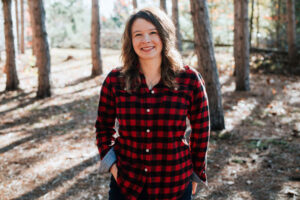The Death of Sampling and the Rise of Forest Architecture
Certified Forester and #forestproud friend, Eli Jensen, is advancing the shift from traditional forest sampling to “forest architecture,” a cutting-edge method enabled by technologies like LiDAR and remote sensing. Forest architecture manages forests at the individual tree level, offering precision in forest health assessment, restoration, and resource management. Despite challenges, this approach has the potential to revolutionize forest management and opens new frontiers for sustainable forestry in the 21st century.
ReadAdapting forests for a changing climate in the Adirondacks
As our cities continue to grow, so do the challenges they face. Reimagine the way society lives, works, and plays by moving our cities from climate problems, to climate solutions.
ReadSeeing the Forest for the Tweets
As our cities continue to grow, so do the challenges they face. Reimagine the way society lives, works, and plays by moving our cities from climate problems, to climate solutions.
ReadLacey Rose, Canadian Forester, hosts Volvo Penta’s “Mighty Jobs” series
‘Mighty Jobs’ will see Volvo Penta’s solutions put to the test on applications as diverse as harvesters, haulers, fire trucks and reach stackers. With more than a decade working in forestry, Canadian presenter Lacey Rose is ideally equipped to show what the machines are capable of.
ReadChanging the Face of Forestry
Entering the forest industry can be intimidating for women in a traditionally male-dominated workforce, but positive changes are leveling the playing field.
ReadLacey Rose | OFIA Profile
I love forests. As a child growing up in an isolated, northern mining town, I spent a lot of time in the woods. Berry picking, ski-dooing, fishing, mosquito-swatting: it was home. Ironically, I had no concept of what forest management was, and my initial perceptions were formed entirely by media. Popular media taught me that cutting trees was bad and forests should be protected. A tree-hugger was born. Luckily, life led me to people who encouraged me to ask questions and to not always believe what you read or hear.
Read





